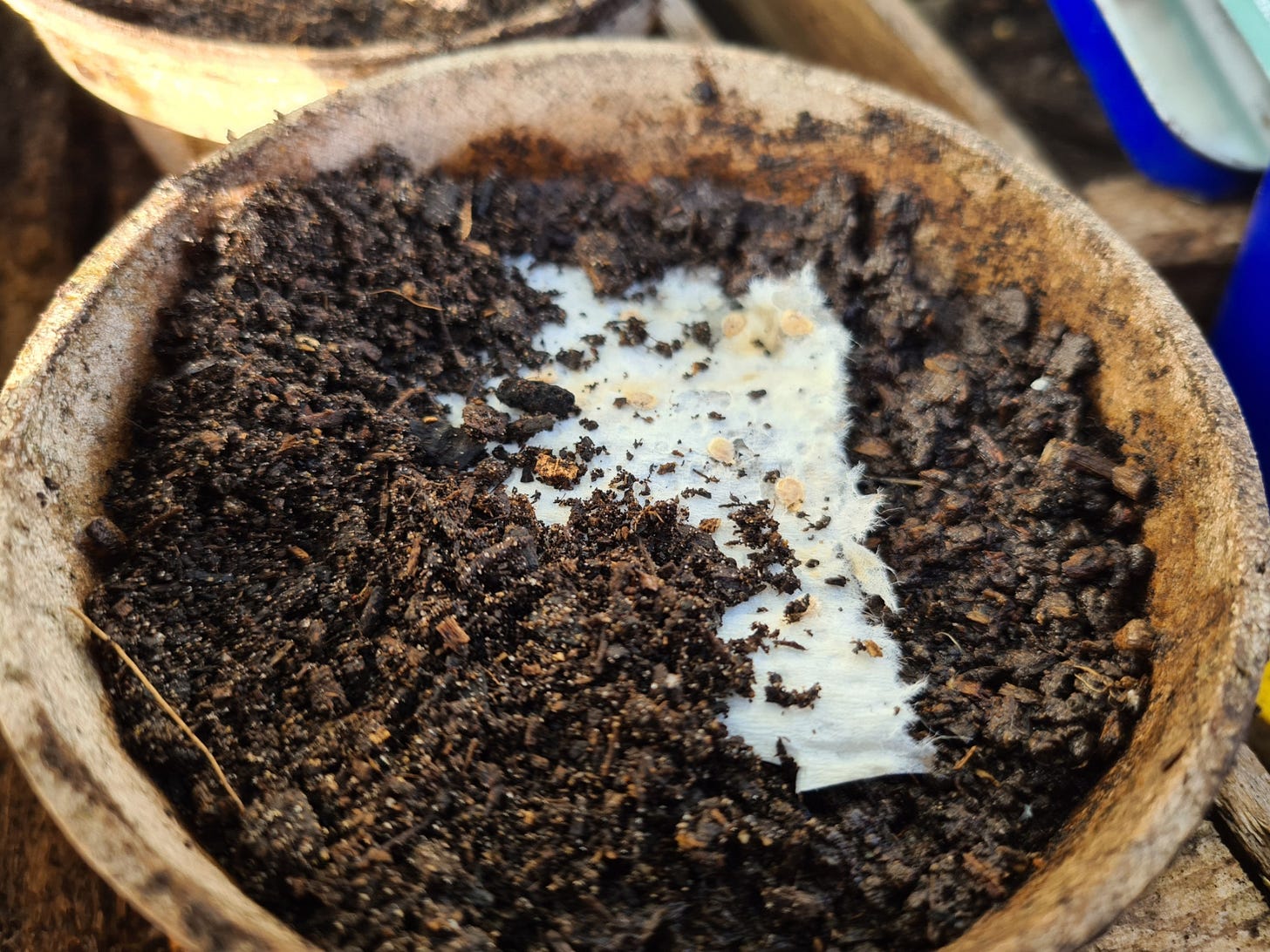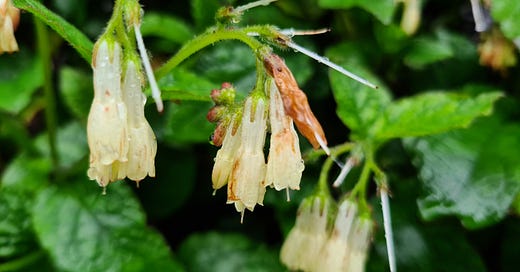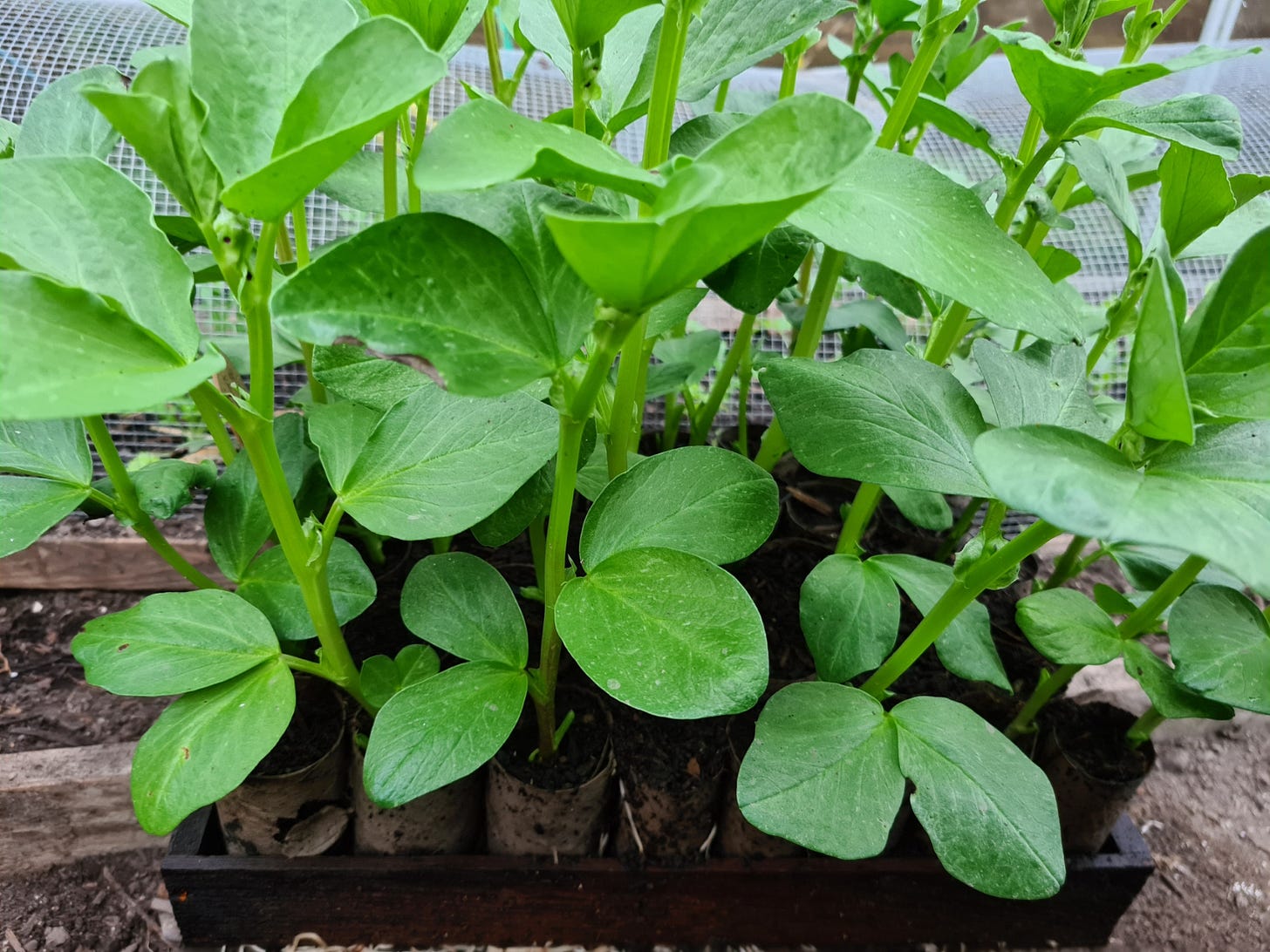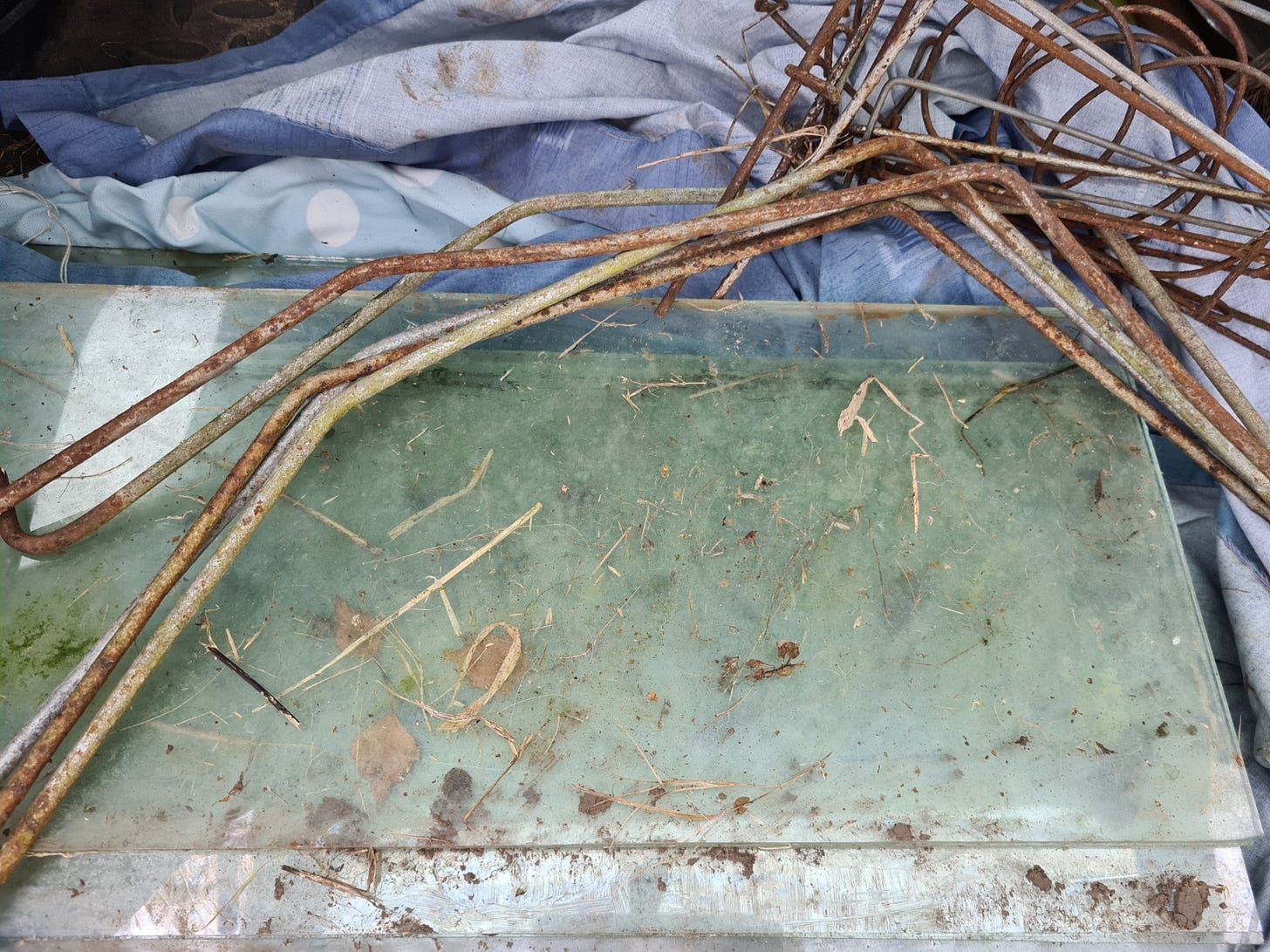We have lift-off!
Well, ok, a cautious hop off the ground, maybe. Sowing has now started in earnest here: but strictly indoors only, as outdoors all is still sloshy and slick with mud and no place for delicate seedlings.
Thank goodness for greenhouses. I have two, which always sounds terribly profligate until you realise I acquired them in quite the most sustainable, and happily also the cheapest way possible.
New greenhouses are not only eyewateringly expensive: they come with a pretty hefty carbon footprint. The aluminium required for the frame chalks up 11kg (25lbs) of greenhouse gases per kilo (2lbs) of greenhouse; the glass comes in at up to 8.4kg (18lbs) CO2e a kilo (2lbs). You can improve things a bit by using recycled aluminium – one kilo greenhouse gases per kilo aluminium - but it’s still a little hard to justify, especially when there’s a near zero-carbon alternative.
Both my greenhouses are second hand: one inherited with the house, the other bought online for about £35 plus an afternoon dismantling it in someone else’s garden and reassembling it in mine. It’s served me well ever since.
Right now, when the rain is still hammering down, the greenhouse *is* my garden. It’s the only place which is relatively dry, and on the very occasional sunny day warm too. It’s a little risky trying to germinate seeds at this time of year even with a greenhouse, so I’m sticking to the very hardiest of vegetables only: I’ve sown mixed salads, lettuces, summer brassicas like calabrese and cauliflowers, and the first of the hardy roots (turnips and beetroot, mostly).
Any veg which I’d normally be planting or sowing straight into the ground this month are on hold for the moment: it is far too wet still for carrots, or annual herbs like rocket, or the annual flowers – marigolds, poppies, nigella and poached egg plant (Limnanthes) might go in the ground around now in a drier year, but not this one. The onion sets too are still in their paper bags.
But there is a glimmer of hope: I have acquired a secret weapon. Can you guess what this pile of twisted, rusty old metal and slightly mucky glass I collected this weekend might be?
If you’ve visited any old Victorian gardens lately you might recognise them, scruffy as they are: these are old-fashioned glass barn cloches, and I’m hoping they will let me sow outdoors even in the teeth of this relentless rain.
I have been looking out for a chance to get my hands on glass barn cloches for some time. You can buy the frames new, without the glass, but for eyewatering prices, and I knew there were some old ones still in circulation if only I could track them down.
Then last week I spotted an ad on Marketplace (local *and* second hand - the sustainability-minded shopper’s dream combo). A young couple had moved in to a rundown old house not far from here and found the garden covered in dozens and dozens of barn cloches - rows of them, from one side of the garden to the other.
Cloches are enormously useful at this time of year: put them in place a couple of weeks ahead of time and they’ll warm the soil ahead of sowing, and dry it out a little, too. Inside, they create a lovely little microclimate underneath where seedlings can thrive, out of the worst of the weather and sheltered from pests, too.

I have in the past used those polythene ‘tunnel’ cloches you concertina out over your plants, but my pledge to buy no new plastic for the garden means those aren’t an option for me any more: and besides, I never really liked them anyway. They’re great for the first week or two, while they’re still relatively new, but they rip easily and if there’s a storm they simply blow away – leaving your veg unprotected just when they need it the most. Glass cloches are heavier, so they stay in position much more sturdily; they do break from time to time but I am considering ways of getting hold of some toughened glass to counteract this (very high carbon, so I will see if I can find some second-hand again).
It does require degree-level origami skills to assemble them. At the moment they are still in the back of the car, but I want them on the garden by next weekend ready for sowing towards the middle of this month: I am bracing myself for a long and frustrating session while I try to figure out where this curly bit goes into that hooky bit and how the heck do you get the glass into that clip without breaking it. There are Youtube videos. Wish me luck.
It does feel as if things are starting to stir, just a little, here and there, and very much in the teeth of the worst winter I can remember for years. The wonderful thing about a garden is that it never lets you sit in the doldrums for too long: come on, it seems to say, don’t just sit there moping, there are things to do, the year is marching on and we have seeds to sow. It’ll be summer the next time you look.
This week I’m bringing you the third instalment of the New Veg Plot Starter Course: this time we’ll be talking about drawing up a masterplan, what to include, and how to decide what goes where to make sure your veg plot is both handsome and practical. Alongside it I’ll be running an AMA (Ask Me Anything) where you can raise any questions you might have – either about the course itself, or about veg-growing more generally. This is for paid subscribers only – so you’ll need to upgrade if you’re a free subscriber. It’s not particularly expensive – just a few quid a month – and you can commit to as little as a month, or as much as a year (that’s cheaper, of course!) at a time. Hope to see you there.
Good luck with your own sowing efforts – let us all know what you’re up to in the comments section below. May your seedlings come up straight and sturdy – happy gardening!






